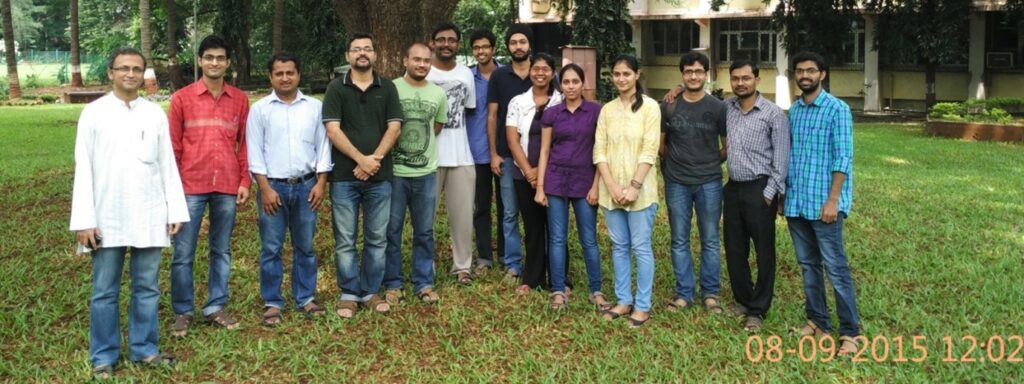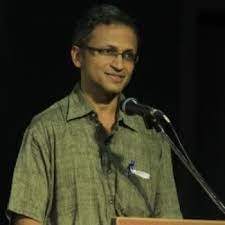It was always pretty clear that I wanted to get into academia. But after I graduated I got an offer from Telco (now Tata Motors) and I thought that it would be a wonderful opportunity to get an insight into the industrial perspective. Instead of having preconceived notions about the industry, I decided I should get a first-hand taste of what it was like, especially when the option was made available to me.
The Dean ACR Newsletter is delighted to speak with Prof. Agrawal for the July 2023 edition.
Yes. Absolutely. In fact – I did not rush into making that decision. I did not work for six months or one year. I spent two years at Telco and during my time there I worked in four departments including R&D, maintenance, planning, and software. Those two years gave me a good overview of how a company functions and it also convinced me that I was a better fit in academia.

Sure. Let me start by explaining fluid mechanics first. Basically, fluids are all around us. We are surrounded by air. Human bodies are filled with blood. Air flows in and out when we breathe. So fluids are not something that we can escape from. So Fluid Mechanics tries to understand the motion of the fluid and looks at the forces that get generated because of it. Practical and day-to-day examples would be asking the question – how do airplanes generate lift and fly? It’s for the transfer of effluence in an industry that we use a pump. So we have to look at the capacity of the pump. The subject, therefore, has both practical and fundamental applications. With heat transfer, there is the movement of heat. And heat transfer is what occurs when we cook food.
To also give you some context – these subjects are not just studied by mechanical engineers but also by civil, chemical, and aerospace engineers. The subject, therefore, cuts across multiple disciplines. For example – biotechnologists will be interested in blood flow, aerospace engineers will be interested in aircraft design, and so on.
The other aspect we study is microscale device development. So, typically, a patient goes to a clinic or a hospital and gives samples of blood to take myriad tests. They have to wait a few days for the result and then the doctor will make the diagnosis and prescribe medication. That takes a long time and patients feel anxious while waiting for the results. In our lab, we develop point-of-care devices to fasten the process. Our goal is to make the sample sizes smaller (use fewer drops of blood instead of an entire syringe) but speed up the results and make it less expensive.

Sure. So, this is where the engineering and fluid mechanics comes in. Because, with these devices, we take blood and make it flow and then separate whatever is of interest to us.
For example – blood has various components including plasma, platelets, and other cells. The process of centrifugation spins the blood at a very high speed which then lets the red blood cells settle down and separate the liquid plasma. Typically, all tests are conducted in the liquid part of the blood and our device allows for the separation of the liquid from the solid part of the blood.
But when people use home tests, it is very difficult to use a centrifuge because of safety and energy issues. Centrifuge cannot be miniaturized. So how can people collect plasma at home without being able to use a centrifuge? That’s where our study on microscale devices can come to the rescue. These miniature devices can separate plasma from the blood. This is an issue that researchers from all over the world are working on. From early detection of cancer to treating dengue by administering platelets-rich plasma – these microscale devices can revolutionize the healthcare industry.
That is a very good question. Publishing is very important. There is no doubt about that. But what’s also important is what you publish (the core content of the research) is more important than how many articles you publish. So in that sense, if quantity is all that matters, I would believe in publish or perish. But we don’t believe that at IIT Bombay. Here, the process of hiring professors is very rigorous. We look at their research and find out how well it’s received by peers who are experts in the field. But I would still encourage young researchers to publish because it will give them an idea of the developments that are happening in their field and how far ahead in their subject area they are.

Well, I didn’t plan to become the Dean of International Relations. It came to me but I am happy it did. The position has exposed me to a different set of challenges within the academic setup at IIT Bombay. As the Dean of International Relations, my job entails promoting institute partnerships. This includes promoting IIT Bombay as well as welcoming more foreign students to our institute.
Correct. We are only looking into university relationships and not industrial partnerships. We bring together faculty from other universities to collaborate and leverage the facilities available to them at IIT Bombay. We promote research collaborations with the hope that more can be accomplished when experts come together instead of working on an issue individually. Another aspect includes providing opportunities for students to travel, go to foreign universities, work in different labs, and take in a different academic environment. This will help broaden their outlook as researchers and make them more rounded human beings.

I think this is something worth elaborating. Sometimes when we talk to alumni, they think that we are just a stellar teaching school or that we are providing only undergraduate education. The first thing we would like to do is change that mindset. Because that is not true.
For instance – if you look at the composition of our students at the Institute you will find that only 40% of them are undergrads while the rest of them are graduate students. Yes, 30% of our student population are Masters students while another 30% are Ph.D. students. Our overall student numbers have increased dramatically from the time when many of our alumni were students on campus. We now have 13,000 students on campus.
Also, in actual numbers, we have 3,700 Ph.D. students on campus. This number is much higher than most of the research institutes. So, this is one way that IIT Bombay has completely transformed over the past decades.
Also, we now have a complete ecosystem with several research facilities on campus for students pursuing their thesis work. In the past few years, IIT Bombay has become an Institute of Eminence and we have gotten extra funding. This has allowed us to buy the latest equipment for our labs. So in terms of our research capabilities, we are second to none. This is a message that needs to get out into the world.
Also, I would like the world to know about how we tackle the innovation that comes out of the Institute. We have a solid mechanism in place that allows us to translate our academic research into a viable and marketable commercial product. From the Desai School of Entrepreneurship to SINE (which provides our students with office space, connections, mentorships, and more) to the Research Park to the Dean-R&D office – I would like to reiterate that we now have a complete ecosystem that takes care of our students and their career dreams and aspirations.
I would like our research to make a solid impact. I would like for our devices to be marketed and make a big change. I hope some of this is disruptive. But even if it is not disruptive, I would like them to go to the market and change the way things are being done. There is a lot of scope out there and any small contribution made by our lab would make us very happy and fulfilled.
Clearly, Prof. Agrawal is on the right path. In an interview with Mumbai Mirror, Dr Vikrant Shah, an internal medicine expert, at Zen Multispeciality Hospital, confirmed that in terms of diagnostics, Prof. Agrawal’s device could prove very useful. “It can reduce chances of pseudo thrombocytopenia,” said Dr. Shah, referring to situations where lab errors result in readings like significantly low platelet counts. “If a test shows a significant drop in platelets, we would request a pathologist to do a manual count,” said Dr Shah, highlighting how such errors can, at the very least, warrant additional tests and, therefore expenditure.
Click here for more on the article:
What a thought-provoking conversation that was with Prof. Amit Agrawal. His remarkable journey as a professor, researcher, and innovator in the realms of fluid mechanics and microscale device development has already left an indelible mark on the world around us. His work has the potential to revolutionize industries, improve healthcare, and enhance everyday life. As we look toward the future, Prof. Agrawal’s trailblazing work reminds us of the transformative power of curiosity, innovation, and the pursuit of knowledge. We cannot wait to see what the future holds for Prof. Agrawal and will be eagerly awaiting the many accolades and successes that are sure to come his way in the future.
Once again, thank you for speaking to the Dean ACR newsletter, Prof. Agrawal!
Click on the following link for more on Prof. Agrawal’s research:

